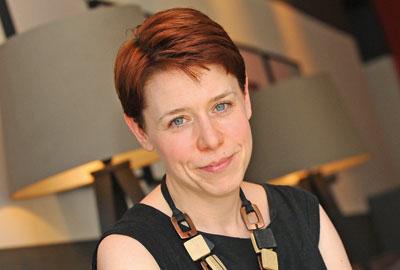The people behind the numbers

The problem with big numbers is that they often don’t feel like they mean anything.
Last week, the Office for National Statistics Labour Market Statistics told us a good news story for the UK. Unemployment in the UK has fallen to 6% of the population. This means that there were 115,000 fewer people unemployed in the UK over the last three months (June to September 2014) than during the previous three month period.
Another number I could use is 600,000. That’s a reference to the number of people who were long term unemployed who have now found work with support from the Work Programme. Again though, that’s just a number. Would it seem that different if it were 500,000 or 800,000?
We can of course try to make such numbers easier to understand through comparisons; 600,000 people into employment is the equivalent of filling the 02 arena in London 30 times.
However, for me and I’m sure for many people who read numbers like this in the papers daily it’s hard to understand such figures in real terms. It’s hard to peer behind the facts to see the that the numbers represent real people and real life changing stories often due to hard work.
The stories behind these numbers are important.
For the employment support sector, this fall in unemployment is a story of innovation and hard work by providers, combined with the perseverance of jobseekers and the support of employers. These numbers are the end point of motivation courses, skills training, CV writing, mock interviews, work experience, condition management – the list goes on.
The difference between 115,000 and 115,001 people moving into work, could be two years of working with a jobseeker, meeting them frequently, helping them find jobs that may be suitable for their circumstances, then helping them prepare for interviews, as well as supporting them with other needs such as advice on debt management and housing.
For a jobseeker this story could be one of overcoming barriers that can at times seem insurmountable. Let me tell you one of the stories in these numbers.
Cescily was referred to the Work Programme, with provider Maximus, after being unemployed for 21 years. Cescily suffered from depression and anxiety and was a very quiet and shy. Her dream was to work at Heathrow Airport as a Passenger Assistant.
As she didn’t have the experience for this role, her advisor discussed other potential roles at Heathrow. After a period of confidence and motivation techniques (for example encouraging her to hang up at home a picture of herself from a good time in her life and getting dressed up to come to the centre), Maximus helped secure her an interview for a cleaning position in the airport.
Cescily spent time getting dressed to her best, did her hair for the first time in twenty years and went along to her interview in good spirits. At the interview itself, Cescily impressed the manager so much that he called over another manager who offered her the opportunity to train as a Passenger Assistant instead. The process of getting her training, CRB, ID and induction was then completed and Cescily was confirmed in the role.
This is just one story, about one person, within those large figures, but everyone’s story is an important one. For Cescily and thousands of other jobseekers, moving into employment is a life changer.
If you are interested the stories of others who have found work, see the ERSA youtube channel.
Kirsty McHugh is chief executive of the Employment Related Services Association (ERSA)











Responses